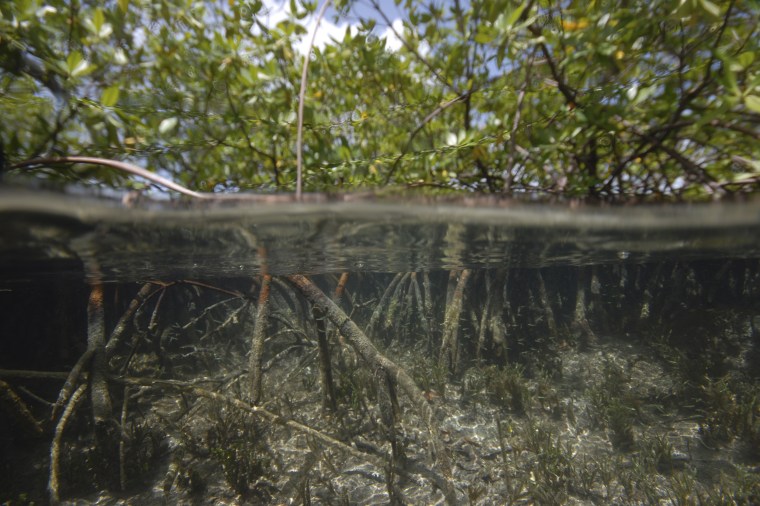
Scientists have discovered the world’s largest bacteria in a mangrove swamp in the Caribbean. While most bacteria are only seen through the microscope, this one is visible to the naked eye.
Scientists identify the largest bacteria ever
Scientists discovered the largest bacterium known to man in a shallow mangrove swamp in the Caribbean. The discovery is redefining the possibilities of one of the ancient life forms on the planet. Called Thiomargarita magnifica, the bacteria is noteworthy for both its size and internal architecture.
The thin white filament, approximately the size of a human eyelash, is “by far the largest bacterium known to date,” said Jean-Marie Volland, a marine biologist at the Lawrence Berkeley National Laboratory and co-author of a paper announcing the discovery Thursday in the journal Science.
A normal bacterial species measures 1-5 micrometers long. This species averages 10,000 micrometers (four-tenths of an inch/1 cm) long, with some Thiomargarita magnifica twice that length. The largest known bacterium until now had a maximum length of around 750 micrometers.
“It is thousands of times larger than regular-sized bacteria. Discovering this bacterium is like encountering a human being as tall as Mount Everest,” stated Volland.
“It is orders of magnitude bigger than what we thought was the maximum possible size for a single bacterium. They are about the same size and shape of an eyelash,” added Volland.
More on the bacterium and its inner mechanics
It was first spotted in the sulfur-rich sea water in a Guadeloupe swamp in 2009 by co-author Oliver Gros. Gros is a microbiologist from the Université des Antilles. However, since then, they identified it in several locations across Guadeloupe. Guadeloupe is a French archipelago in the Caribbean.
But he didn’t immediately know it was a bacterium because of its surprisingly large size — these bacteria, on average, reach a length of a third of an inch (0.9 centimeters). Only later did genetic analysis reveals the organism to be a single bacterial cell.
“In 2009, I found long white filaments attached to a sunken leaf of a mangrove tree. I found such filaments intriguing. I brought them back to the lab to analyze them. Big surprise for me to have so huge a bacterium living in the mangroves of Guadeloupe,” stated Gros.
Scientists have not yet been able to grow it in a lab culture, but the researchers’ say the cell has a structure that’s unusual for bacteria. One key difference: It has a large central compartment, or vacuole, that allows some cell functions to happen in that controlled environment instead of throughout the cell.
“The acquisition of this large central vacuole definitely helps a cell to bypass physical limitations… on how big a cell can be,” said Manuel Campos, a biologist at the French National Center for Scientific Research, who was not involved in the study.
Mapping its genome also reveals that it has lost essential genes for cell division and has more than the usual number of copies of genes responsible for cell elongation.
“This may explain, in part, why the cell grows into such an elongated filament. The genome is also very big and contains three times the average number of genes that are usually found in bacteria. Half of those genes, we have no idea what are they for,” added Volland.
